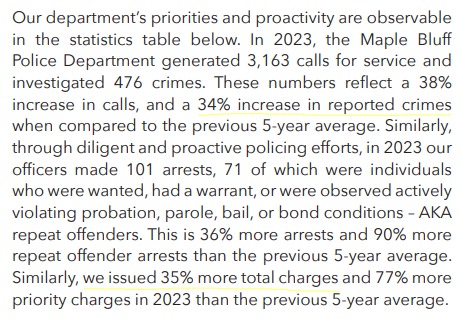As Mark Twain wrote, "Facts are stubborn things, but statistics are pliable."

The statistics shared by the Chief of Police in a March 2024 community article made for grim reading. In 2023, calls for service were up 38%, a 34% increase in reported crimes, and 35% more charges were issued. It painted a dark picture of the state of the community compared to years past.
The statistics presented had one problem: They were so different from what community members experienced that a deeper dive was needed.
Over the next five articles, we will share how we approached this analysis and enabled this community to ask better questions, provide better insight, and dig a little deeper to share an accurate picture about policing and safety in the community.
Step 1: Understanding the data
- What first-pass deductions can we gather?
- What data do we have, what can we get, and how will we correlate?
- Are we using a common language to describe the data being analyzed?
Step 2: Building the data set
Step 3: Quality control
Step 4: Presentation of insight
Step 5: Lessons learned.
While the data is unique to this community, analyzing and gaining insight from data applies to both the public and private sectors, large and small. Our BI helpdesk is a great place to start if you want to move beyond text and gain insight from your data. If you have a larger project involving data transformation and unlocking the full power of your data, connect here... we would love to start a conversation.
By: Patrick Grant, Director of Public Sector Sales























.png)
.png)

.png)











.png)















